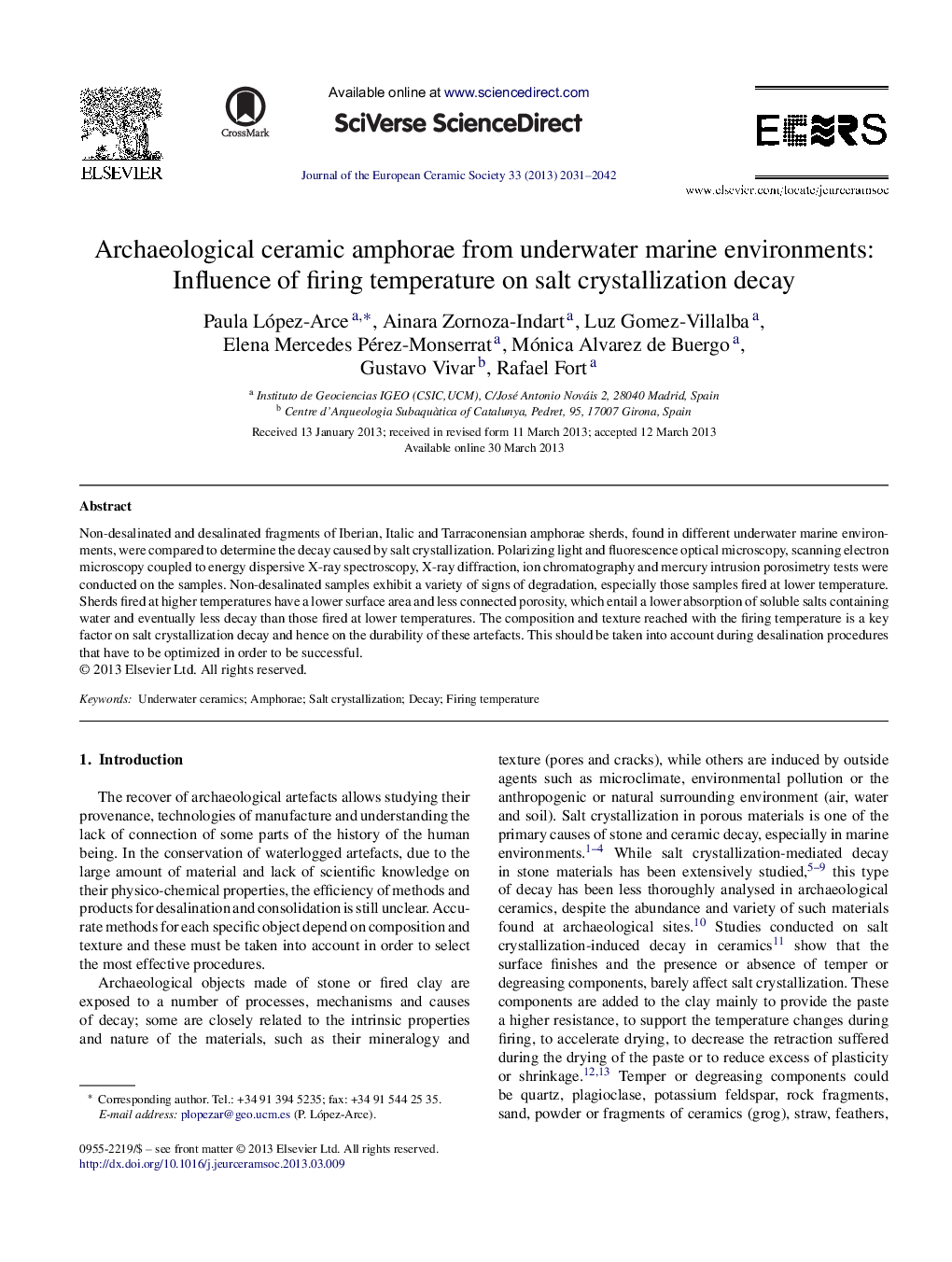| Article ID | Journal | Published Year | Pages | File Type |
|---|---|---|---|---|
| 1475436 | Journal of the European Ceramic Society | 2013 | 12 Pages |
Non-desalinated and desalinated fragments of Iberian, Italic and Tarraconensian amphorae sherds, found in different underwater marine environments, were compared to determine the decay caused by salt crystallization. Polarizing light and fluorescence optical microscopy, scanning electron microscopy coupled to energy dispersive X-ray spectroscopy, X-ray diffraction, ion chromatography and mercury intrusion porosimetry tests were conducted on the samples. Non-desalinated samples exhibit a variety of signs of degradation, especially those samples fired at lower temperature. Sherds fired at higher temperatures have a lower surface area and less connected porosity, which entail a lower absorption of soluble salts containing water and eventually less decay than those fired at lower temperatures. The composition and texture reached with the firing temperature is a key factor on salt crystallization decay and hence on the durability of these artefacts. This should be taken into account during desalination procedures that have to be optimized in order to be successful.
